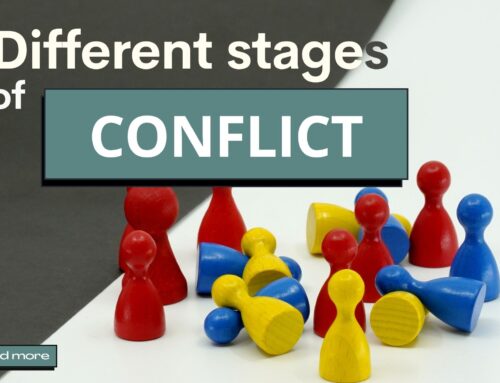
Quiet quitting is a subtle, but significant, problem that many organizations are grappling with today. Unlike traditional resignations where employees formally submit their notice, quiet quitting happens under the radar. Employees who quietly quit become disenchanted, disengage from their work, withdraw from collaboration, reduce their productivity, and eventually leave without a word. This can be particularly detrimental to organizations, as it often goes unnoticed until it’s too late. While this silent road to departure may seem perplexing, it is often a direct consequence of a lack of psychological safety within the workplace.
Psychological safety refers to a climate where employees feel comfortable speaking up, sharing their thoughts, and taking risks without fear of reprisal or judgment. In this article, we will explore the connection between psychological safety and quiet quitting, shedding light on why fostering a psychologically safe workplace is crucial for employee retention and overall organizational success.
The Rise of Quiet Quitting
One of the primary reasons employees opt for quiet quitting is their fear of repercussions. When individuals perceive their workplace as lacking psychological safety, they may be afraid that voicing concerns or criticizing decisions will lead to negative consequences, such as being passed over for promotions, facing hostile reactions from colleagues or superiors, or even losing their job. To avoid these potential risks, they remain silent and gradually disengage.
Lack of Trust
Trust is the bedrock of any healthy workplace culture. In psychologically unsafe environments, trust erodes rapidly. When employees don’t trust their managers, co-workers, or the organization itself to handle their feedback constructively, they are less likely to speak up. Over time, this mistrust festers and contributes to a culture of disengagement and quiet quitting.
Isolation and Loneliness
A psychologically unsafe workplace often leads to feelings of isolation and loneliness among employees. When individuals feel disconnected from their peers and unsupported by their organization, they are more likely to withdraw emotionally. This isolation can foster a sense of alienation, pushing employees towards the path of quiet quitting.

Harm Done from Structural & Systemic Oppression and Discrimination
At the heart of a lot of quiet quitting is the harm done by structural racism, discrimination, and subtle acts of exclusion (sometimes called microaggressions). Employees and leaders with historically marginalized identities may disengage because it actually feels like the safest thing to do. When a leader’s voice is ignored because of the color of their skin, their gender, who they love, or what faith they practice, over time they begin to question why they speak up at all. Similarly, when an employee is treated in this way, they may simply disengage and stick to the bare minimum of their position.
The Consequences of Quiet Quitting
The consequences of quiet quitting are far-reaching and detrimental to both employees and organizations:
Decreased Productivity: Employees who quietly quit become disengaged and less motivated to perform their best. This inevitably leads to a decline in productivity and quality of work.
Loss of Talent: Organizations that fail to address the issue of quiet quitting risk losing valuable talent. These employees, who might have been high-performers, exit without giving the organization a chance to rectify the underlying issues.
Financial Loss: This can come as loss of revenue, decreased profits, or unnecessary spending on recruitment that could be saved by investing in developing and retaining their best talent. It is estimated that replacing a single employee can cost upwards of $100,000 (the cost of potentially multiple salaries).
Negative Culture: Quiet quitting perpetuates a culture where open communication and feedback are discouraged, making it difficult for organizations to address problems, innovate, and adapt to changing conditions.
Fostering Psychological Safety
To combat quiet quitting and build a thriving workplace culture, organizations must actively work to foster psychological safety.
Start by asking questions: If you want to know if your employees feel safe, ask them. However, when you look at the respond, also look at who is NOT responding. The lack of engagement may give you a clue as to who does not feel safe to answer, and who may be already resigned, and on the quiet quitting road.
Create Safe Feedback Channels: Establish formal channels for employees to share their thoughts, concerns, and ideas anonymously if necessary. This can help alleviate the fear of repercussions.
Invest in Training for Leadership: Safety happens from the top down. That is because the leaders (CEO and Senior leadership teams) set the culture and tone. If the leaders perpetuate toxic culture, no matter how many trainings you offer employees, it won’t lead to a psychologically safe environment because change will be limited and even thwarted by those who are not aligned with cultural transformation. Workshops to define psychological safety are a great start, however deeper development of communication skills, empathy, and conflict resolution will help employees and managers navigate difficult conversations effectively and, in a trauma responsive manner.
Invest in Equity, Inclusion & Belonging: When employees feel a sense of respect, value, belonging and mutual support, they are more likely to contribute and bring their best self to the table.
Address Issues Promptly: When concerns or issues are raised, address them promptly, equitably, and adequately (meaning adequately to all parties). This shows all employees involved that their input is valued and taken seriously.
Quiet quitting is a growing problem that can erode the foundation of any organization. By recognizing the link between psychological safety and silent resignation, businesses can take proactive steps to create a culture where employees feel empowered to voice their opinions, concerns, and ideas without fear. In doing so, they can cultivate a more engaged and productive workforce, fostering an environment where employees thrive and organizations succeed. Remember, the silent resignation of employees can often be the loudest wake-up call for an organization to prioritize psychological safety.
Need a speaker? Learn more about Dr. Maiysha’s speaking and trainings. Bring the tools of trauma responsive communication to your leaders, and create a culture of psychological safety in your organization. Increase employee engagement, fulfillment, well-being, and retention. Contact us today and schedule a call with Dr. Maiysha to learn how we can improve your workplace culture. https://mindremappingacademy.com/corporate-programs










